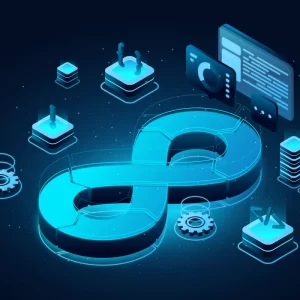Course Description:
Beginning with the history of agile development and moving through the disciplines promoted by Scrum, this Scrum Master (CSM) training course will give you a comprehensive understanding of the Scrum methodology while specifically reviewing the behaviors expected of a Scrum Master. This 2–day Certified Scrum Master training course is suitable for those practicing or looking to practice the art of the Scrum Master, but is highly valuable for anyone involved in Scrum (Managers, Team Members, Product Managers, etc.).
Even projects that have solid, well–defined project plans encounter some degree of change and waste. Shifting market conditions, budget cuts, staff restructuring, or any number of influences will disrupt the best plan while contributing to customer dissatisfaction and staff discouragement. Moreover, projects that begin with changing or unclear requirements make it difficult to even establish project expectations. Scrum is the agile development process that allows teams to deliver usable software periodically throughout the life of the project, evolving with new requirements as the project proceeds.
Course Topics
Part 1: Agile Thinking
In order for us to understand the benefits of Scrum and the nuances behind its framework, we begin with the history of agile methods and how relatively new thoughts in software development have brought us to Scrum.
- How Manufacturing has Influenced Software Development
- The Origins of Agile Thinking
- The Agile Manifesto
- The Complexity of Projects
- Theoretical Vs. Empirical Processes Overview
- The “Iron Triangle” of Project Management
Exercise: The “Art of the Possible.” This is an opportunity to understand how small changes in behavior can have a large impact on productivity. This also turns our thinking towards new ideas and a willingness to change for the better.
Part 2: The Scrum Framework
Here we’ll ensure that we’re all working from the same foundational concepts that make up the Scrum Framework.
- The Different Scrum Roles
- Chickens and Pigs
- Iterative Development vs. Waterfall
- Self-Management Concepts
- Full Disclosure and Visibility
- The Scrum Framework Overview
Exercise: The 59-minute Scrum Simulation. This popular exposure to Scrum asks us to work on a short project that lasts for just 59 minutes! We’ll walk through all of the key steps under the Scrum framework as we work in project teams to deliver a new product.
Part 3: Implementation Considerations
Moving beyond Scrum’s foundational concepts, we’ll use this time to dig deeper into the basics of implementing Scrum. We’ll also use this time to begin a discussion of integrity in the marketplace and how this relates to software quality.
- Traditional vs. Agile Methods Overview
- Scrum: The Silver Bullet?
- The Agile Skeleton
- A Scrum Launch Checklist
Part 4: Scrum Roles
Who are the different players in the Scrum game? We’ll review checklists of role expectations in preparation for further detail later in our session.
- The Team Member
- The Product Owner
- The Scrum Master
Exercise: Understanding customer expectations. This exercise is the beginning of an extended exercise involving agile estimating and planning. During this first portion of the exercise, we’ll work with a fictional customer who has a very demanding schedule and understand how our assessment of project work plays a significant role in customer satisfaction.
Part 5: The Scrum Team Explored
Since the ScrumMaster is looking to protect the productivity of the team, we must investigate team behaviors so we can be prepared for the various behaviors exhibited by teams of different compositions. We’ll also take a look at some Scrum Team variants.
- The Agile Heart
- Bruce Tuckman’s Team Life Cycle
- Patrick Lencioni’s Five Dysfunctions of a Team
- Team Ground Rules
- Getting Human Resources Involved
- The Impact of Project Switching
- The Scrum of Scrums
- Large Scale Scrum (LeSS)
- The Importance of Knowing when Software is “Done”
- Dispersed Team Consideration
Part 6: Agile Estimating and Planning
Although Agile Estimating and Planning is an art unto itself, the concepts behind this method fit very well with the Scrum methodology an agile alternative to traditional estimating and planning. We’ll break into project teams that will work through decomposition and estimation of project work, and then plan out the project through delivery.
- Product Backlog Features
- Relative Weighted Prioritization
- User Stories
- Relative Effort
- Velocity
- Planning Poker and Story Points
- Projecting a Schedule
- Why Plan in an Agile Environment?
Part 7: The Product Owner
The driving force behind implementing Scrum is to obtain results, usually measured in terms of return on investment or value. How can we help ensure that we allow for project work to provide the best value for our customers and our organization? We’ll take a look at different factors that impact our ability to maximize returns.
- The Priority Guide
- Product Backlog Refactoring
- Release Management
Part 8: The ScrumMaster Explored
It’s easy to read about the role of the ScrumMaster and gain a better understanding of their responsibilities. The difficulty comes in the actual implementation. Being a ScrumMaster is a hard job, and we’ll talk about the characteristics of a good ScrumMaster that go beyond a simple job description.
- The ScrumMaster Aura
- Characteristics of a ScrumMaster Candidate
- The Difficulties of Being a ScrumMaster
- A Day in the Life of a ScrumMaster
- The Importance of Listening
- Common Sense
Part 9: Closing Topics
We’ll wrap up with direction on where to go next with your Scrum experience, some recommended reading, Scrum reference sites, and our graduation ceremony.
Meetings & Artifacts Reference Material
While most of this material was discussed in previous portions of class, more detailed documentation is included here for future reference.
- A Chart of Scrum Meetings
- The Product Backlog
- Sprint Planning
- The Sprint Backlog
- The Sprint
- The Daily Scrum
- The Sprint Review
- Why Plan?
- The Ideal Team Day
- Scrum Tools
Target Audience
This Scrum Master (CSM) certification program was developed for any professional who is currently involved in or will become involved in the running of Scrum projects.
Current Scrum Team Members not certified, including:
- Business customer, user or partner
- Product Owners
- Team Members
- Acting ScrumMasters who currently are not scrum certified
Positions within organizations that are interested in moving to Scrum, including:
- Project Manager
- Project lead
- Project sponsors
- IT Manager/Directors
- Business Analyst
- Developers/Programmers
Prerequisites
To gain the most from this course, you should have:
- Basic to Intermediate IT Skills (attendees without a programming background like Python may view labs as follow along exercises or team with others to complete them)
- Good foundational mathematics or logic skills
- Basic Linux skills and familiarity with command-line options such as ls, cd, cp, and su
Inclusions
With CCS Learning Academy, you’ll receive:
- 2 Day Certified Instructor-led training
- Official Training Seminar Student Handbook
- Collaboration with classmates (not currently available for self-paced course)
- Real-world learning activities and scenarios
- Exam scheduling support*
- Enjoy job placement assistance for the first 12 months after course completion.
- This course is eligible for CCS Learning Academy’s Learn and Earn Program: get a tuition fee refund of up to 50% if you are placed in a job through CCS Global Tech’s Placement Division*
- Government and Private pricing available.*
*For more details call: 858-208-4141 or email: training@ccslearningacademy.com; sales@ccslearningacademy.com






